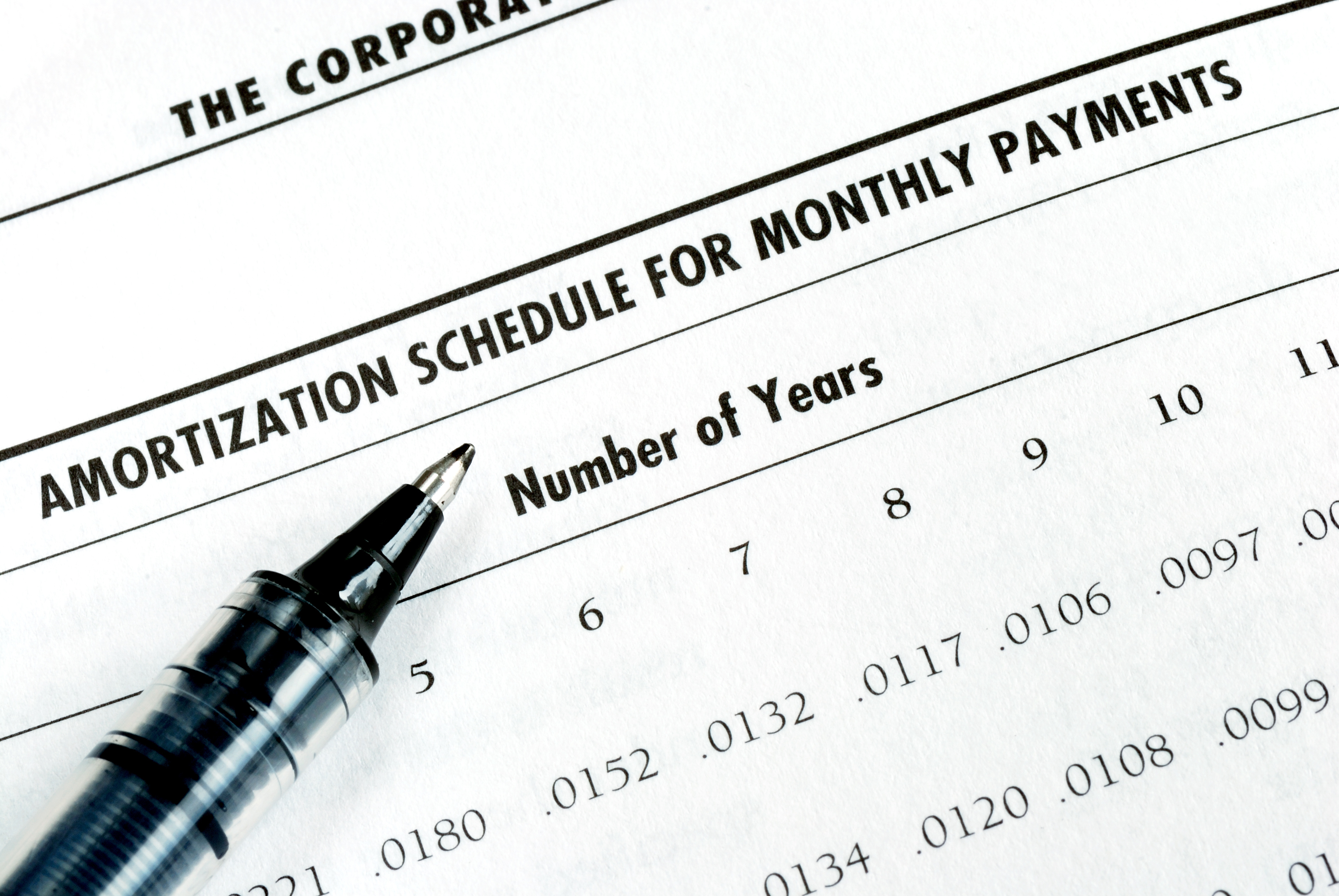Amortization Deep Dive: The Rule of 78s
As we talked about previously, there are many reasons why understanding amortization methods is helpful for financial professionals. Today, we’re...
4 min read
 Cindy Fisher
:
October 8, 2020
Cindy Fisher
:
October 8, 2020

The Consumer Financial Protection Bureau (CFPB) recently released its final rule on small-dollar lending, where lenders were challenging the provisions set for by a 2017 rule. The CFPB rescinded the mandatory underwriting provisions of the 2017 rule. However, the final rule does not rescind or alter the payments provisions of the 2017 rule.
According to the CFPB’s release:
With its actions today, the Bureau is moving forward with implementing the payments provisions of the 2017 final rule. These provisions prohibit lenders from making a new attempt to withdraw funds from an account where two consecutive attempts have failed unless consumers consent to further withdrawals. The payment provisions also require such lenders to provide consumers with written notice before making their first attempt to withdraw payment from their accounts and before subsequent attempts that involve different dates, amounts, or payment channels. These provisions are intended to increase consumer protections from harm associated with lenders’ payment practices.
The Bureau received a petition to commence a rulemaking to exclude debit and prepaid cards from the payments provisions of the small dollar lending rule, and the agency today denied that petition. The Bureau also today issued guidance clarifying the payments provisions’ scope and assisting lenders in complying with those provisions. In addition, today the Bureau released a ratification of the payment provisions in light of the Supreme Court’s recent decision inSeila Law. Although the payments provisions are currently stayed by court order, the Bureau will seek to have them go into effect with a reasonable period for entities to come into compliance.
This ruling is for small-dollar loans with an APR higher than 36%. See Consumer Financial Protection Bureau Issues Final Rule on Small Dollar Lending on the CFPB site for more information.
Your institution will likely determine what is required to comply with these regulations or if it affects loans originated and serviced by your institution, but we want to make you aware of some updates to our system that may help you with these regulations.
We have created a new Action Code 62 (Csh Chk and Immed Pmnts Only). You can assign this Action Code to any account with an APR of greater than 36% and the system will not allow set up of a future or recurring payment from the Loans Transactions EZPay screen or from your payment website (GOLDAccount Center). Immediate ACH/card/debit, cash, and check payments are still allowed, however.
We leave it up to your institution which accounts to apply Action Code 62. If you need to run an init on existing accounts, contact your GOLDPoint Systems account manager.
Also, you can add the Action Code 62 when loans with an APR above 36% are originated within GOLDTrak PC, eGOLDTrak, or a third-party origination system. This will likely require adjusting formulas and mapping fields, so communicate with your account manager if you want this new feature.
We suggest you turn off/discontinue future or recurring payments before applying Action Code 62 to already opened accounts with an APR of 36% or more. You can create a GOLDMiner report showing all accounts with an APR of more than 36% that are currently set up with recurring or future payments. Then you can go through the report and adjust those payments accordingly. See GOLDMiner Report Tips below for one method of how to do this.
If you discontinue payments from the Loans Transactions EZPay screen, they are removed from you’re your online payment center (GOLDAccount Center) as well.
You may want to notify your affected borrowers via a letter, email, phone call, or possibly even text that you will be removing recurring payments for them. Here are some helpful links to show you how to create letters, emails, or texts using our software:
When this action code is present on an account and a user attempts to set up a Recurring, One-Time Future, or Future Payoff on the Loans Transactions EZPay screen in CIM GOLD, they will receive an error message and will be unable to set up those types of payments.
The only payment methods available to an account with Action Code 62 will be cash, check, same-day ACH, or same-day debit/credit card payments (if your institution allows credit/debit card payments).
In GOLD Account Center when an account has Action Code 62, the recurring payment and future payments will be grayed out. The customer will be able to make immediate ACH (e-check) and credit/debit payments.
The following steps explain one example of how to set up a GOLDMiner report to show all accounts with an interest rate above 36% that are currently set up with recurring payments. You may have your own way of creating this report. GOLDMiner and GOLDWriter have many different ways to build reports. This example is fairly simple.
Note: This may also help in creating a Collection Queue if you would like to create a merge letter to notify borrowers you are turning off recurring payments. See the Definitions tab help in DocsOnWeb on how you use a similar report setup structure to create Collection Queues.
1. Go to the Report Warehouse GOLDMiner screen in CIM GOLD and click Add. The New Data Miner dialog box will appear.
2. Enter the name of this report, such as "Recurring Payments with APR over 36%." Keep the Daily radio button selected and click OK to close the dialog.
3. Double-click the new title in the list-view table to open the Field Selection tab for that report.
4. From the Main Record field, start by selecting "CFLN - Loan Master."
5. In the middle windowpane, find and select "LNRATE" (Interest Rate). Note: You could also use an APR field, but those vary according to payment method. LNOAPR is for Original APR. If the original APR hasn't changed since the loan was opened, you can use that.
6. In the left record windowpane, scroll to find the FPRA - Recurring ACH Loan Payments and select it.
Tip: You may also want to include the LNCLSD - Closed Account and LNRLSD - Servicing Released fields from this record, as this will allow us to filter out closed and released accounts.
7. Select any of the fields you want to appear on the report in the middle pane. We suggest you especially select "RA4NBR - Loan Acct Nbr."
8. Click the Logic tab.
9. From the Field drop-down, select "INTEREST_RATE_LNRATE."
10. In the Operator field, select "Greater Than."
11. In the Value field, type "36" and click Add.
12. Next, select "LOAN_ACCT_NBR_RA4NBR" from the Field drop-down.
13. In the Operator field, select "Not Equal To" and in the Value field type "0."
14. Click Add.
15. You can also add the no closed and released account logic. Your Logic tab should now look like this:
-Oct-08-2020-07-55-39-98-PM.png)
16. Go to the Deployment tab and click Run Immediate. The system will take you to the Results tab.
-Oct-08-2020-07-56-25-60-PM.png)
Now you know how to set up a report to show all recurring payments. You can set up a similar report for all future payments using the FPAS record. If you currently do not see the FPAS record available in your GOLDMiner reports, contact your GOLDPoint Systems account manager and ask them to add it.

As we talked about previously, there are many reasons why understanding amortization methods is helpful for financial professionals. Today, we’re...

In today's digital age, where online banking and electronic communication have become the norm, ensuring the security of financial information is...

If you spend any amount of time looking over GOLDPoint Systems documentation, you’ve probably come across the term GILA Loan once or twice. But what...

For those unfamiliar with programming terminology, a bit is an indicator that can be on or off. It’s the 0 or 1 that comprises the first building...

When dealing with hundreds or even thousands of loans, it’s impossible to always remember the special considerations each individual account needs....

Lending institutions have a vested interest in the condition of collateral tied to loans. If the collateral is damaged to the point it isn’t worth...